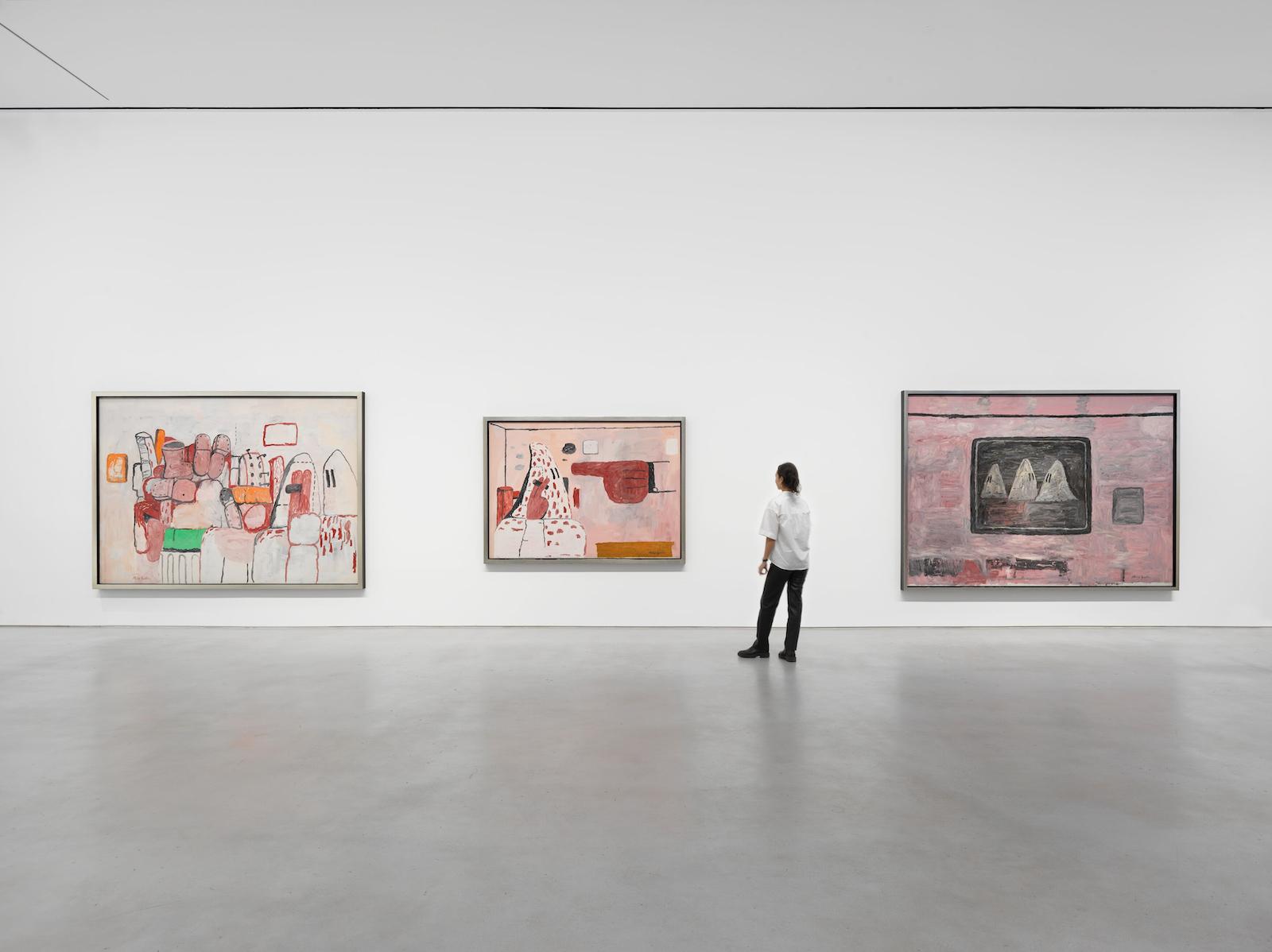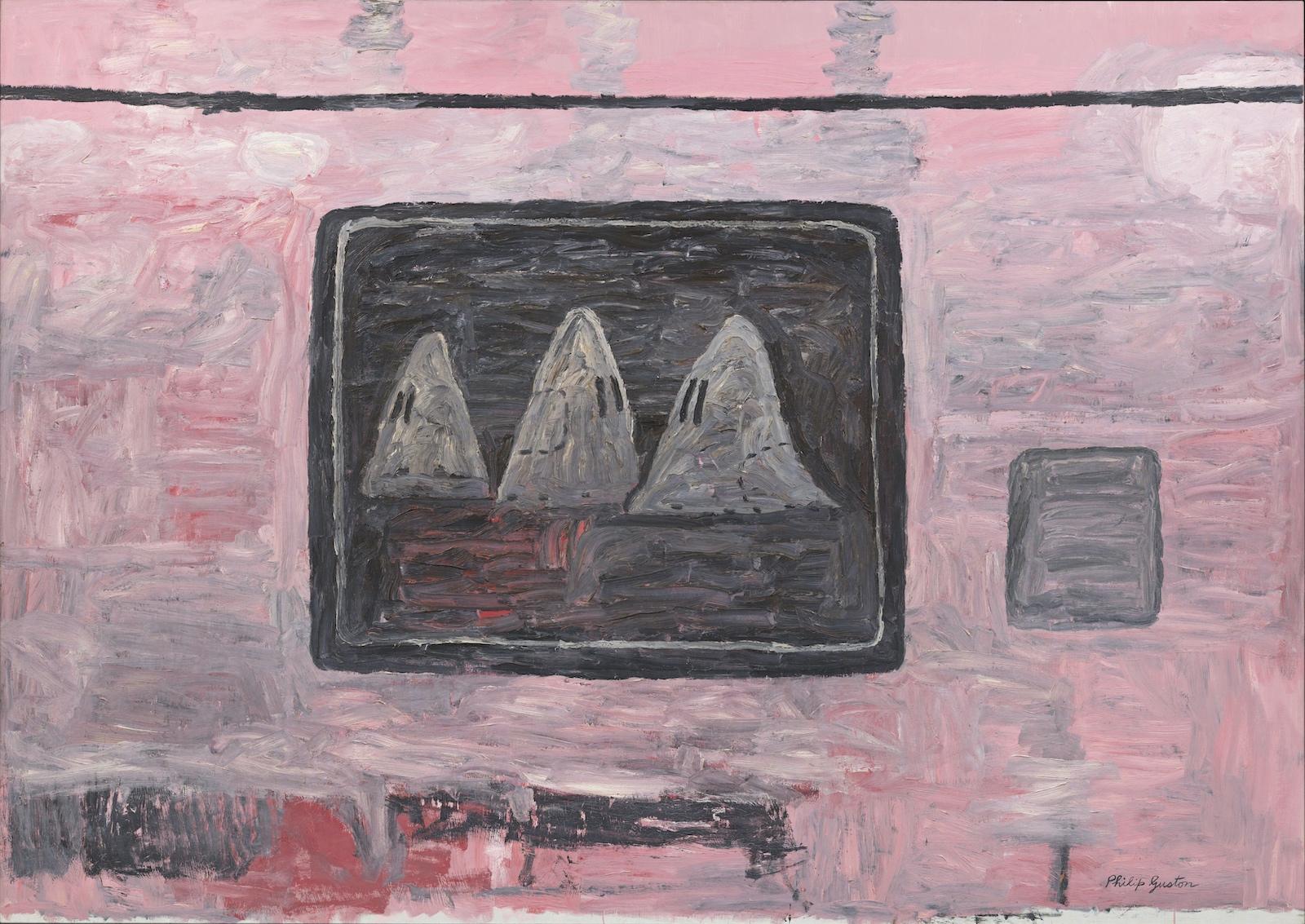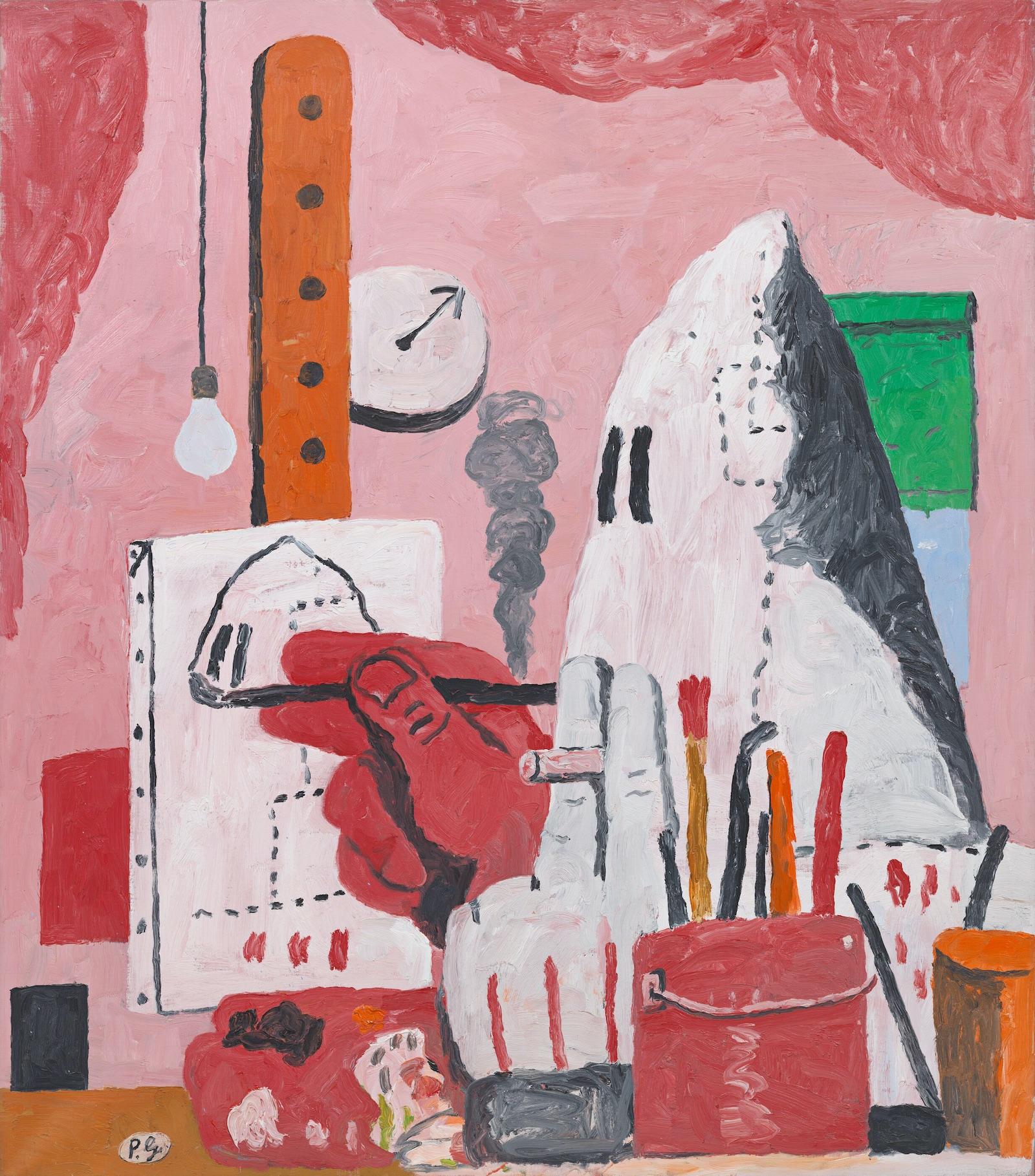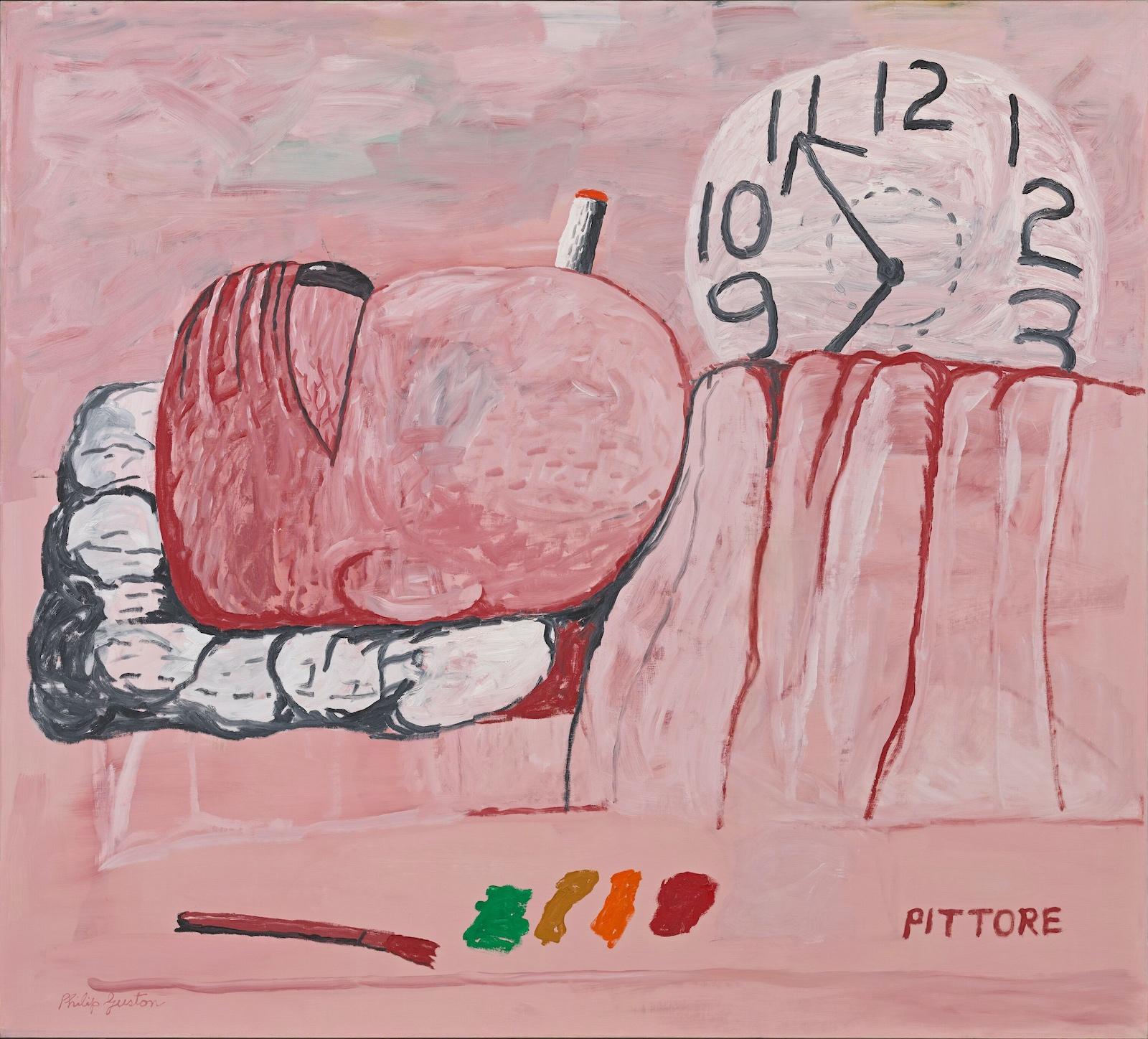The museums spoke of taking time for contextualization and more public education. Critics of the decision, including fellow artists, said the delay was evidence of a “longstanding failure to have educated, integrated, and prepared themselves to meet the challenge of the renewed pressure for racial justice that has developed over the past five years”
No matter which side you’re on, those who don’t want to wait can see a less sweeping, but tightly edited and highly focused view of the painter in “Philip Guston, 1969-1979” now on view at Hauser & Wirth in New York through October 30th. Where the postponed exhibition was a retrospective, focusing on the broad scope of Guston’s career—from figuration and social realism to abstraction and back to figuration again—this exhibit focuses on his late career, and goes straight to the controversial point.


























![DEl Kathryn Barton [Australian b. 1972] the more than human love , 2025 Acrylic on French linen 78 3/4 x 137 3/4 inches 200 x 350 cm Framed dimensions: 79 7/8 x 139 inches 203 x 353 cm](/sites/default/files/styles/image_5_column/public/ab15211bartonthe-more-human-lovelg.jpg?itok=wW_Qrve3)



